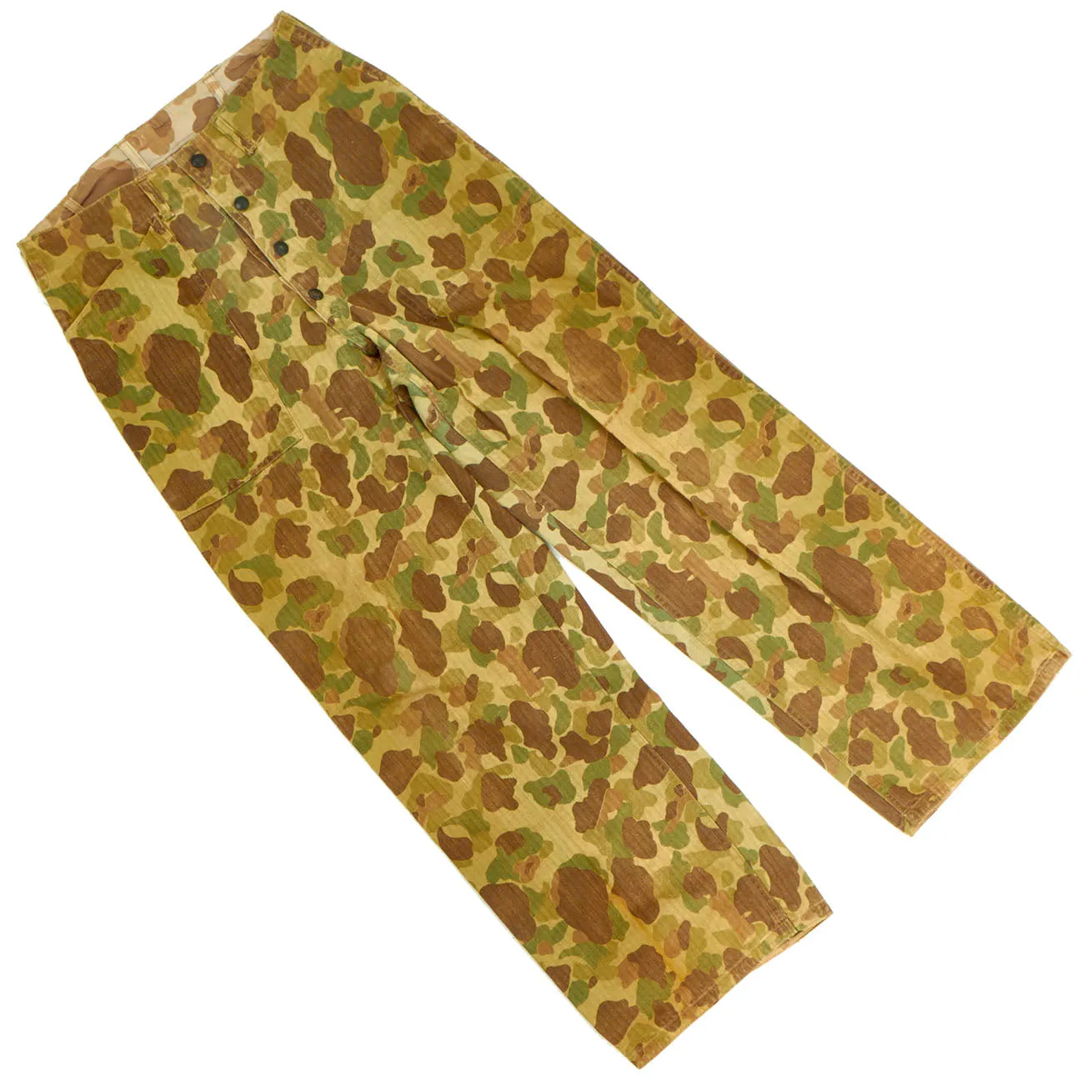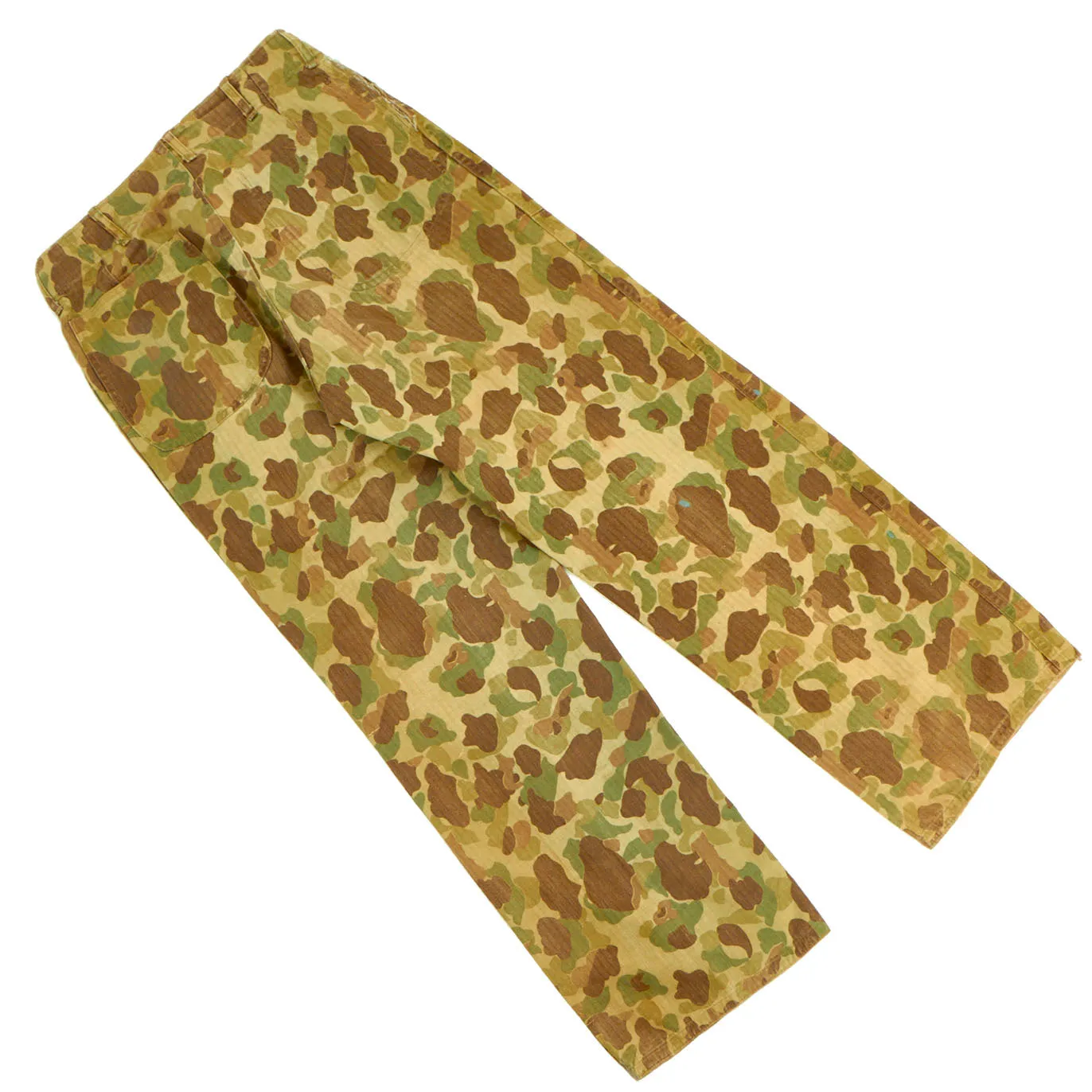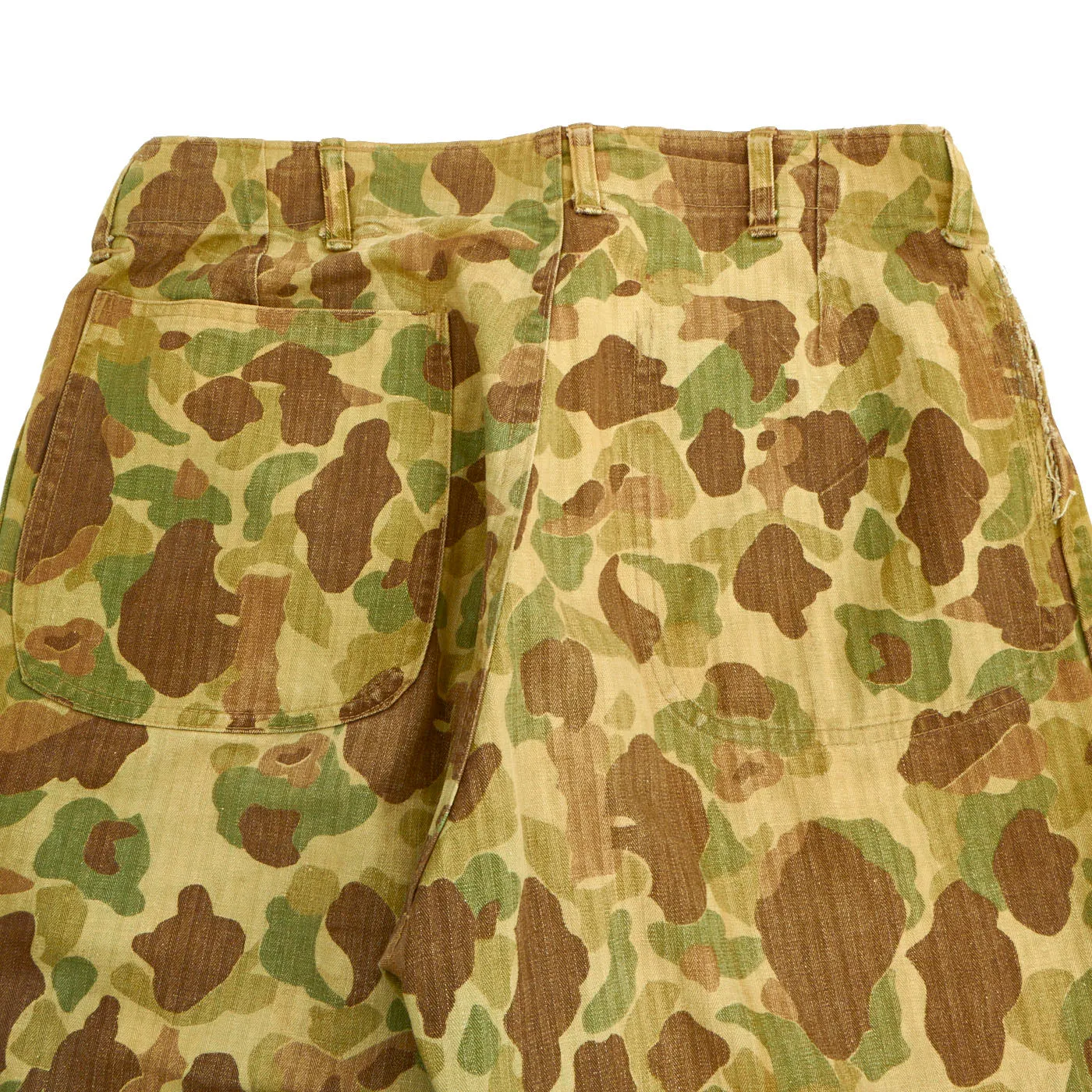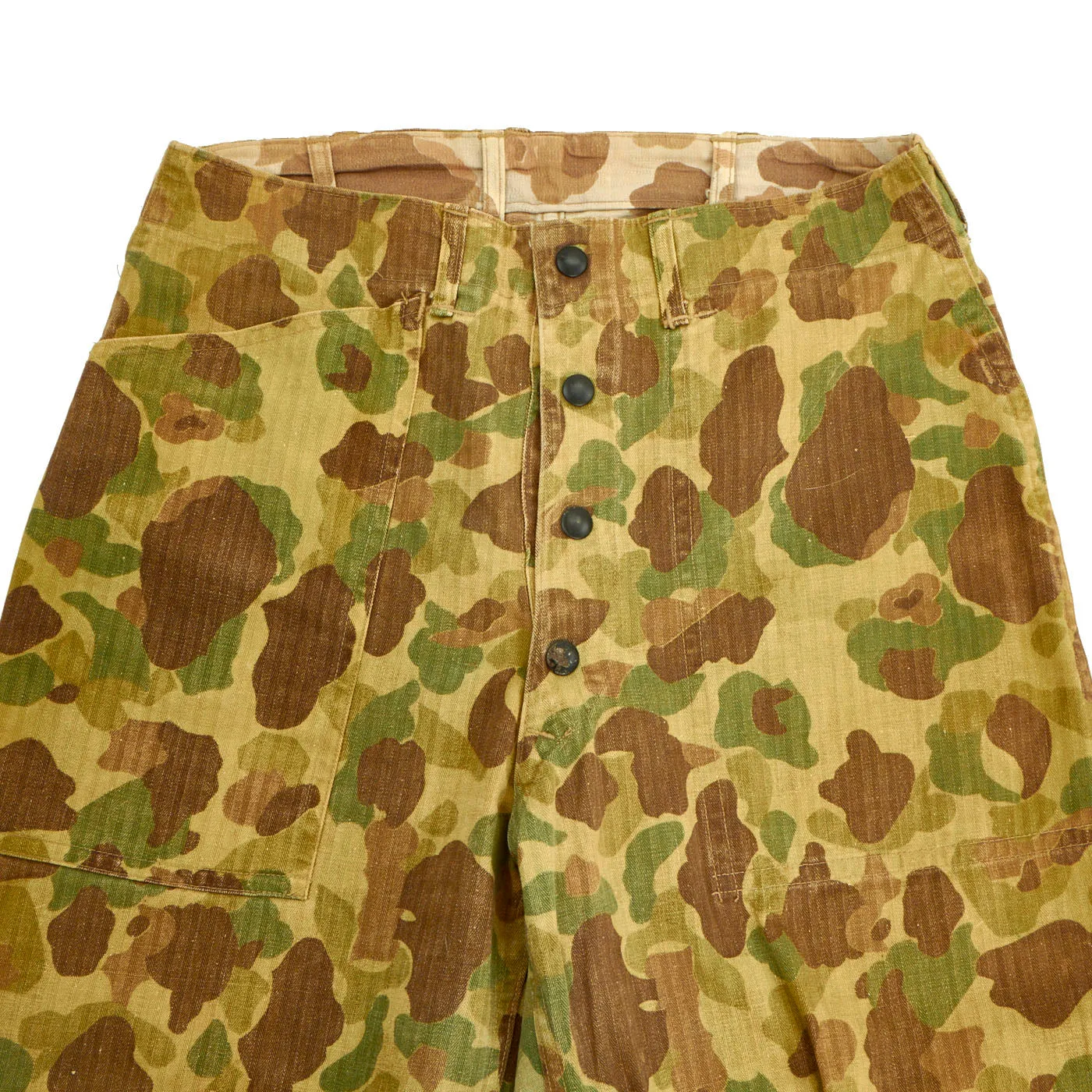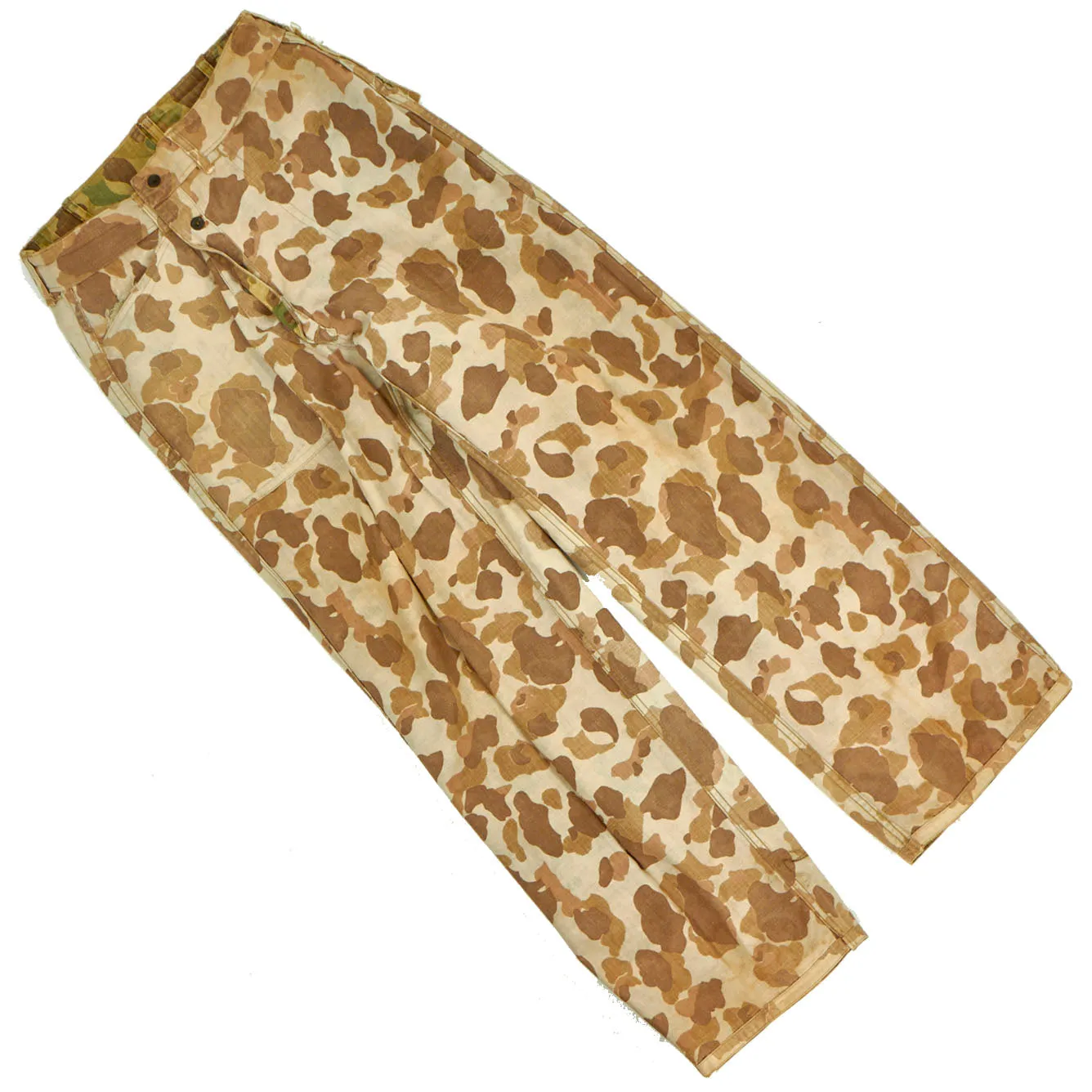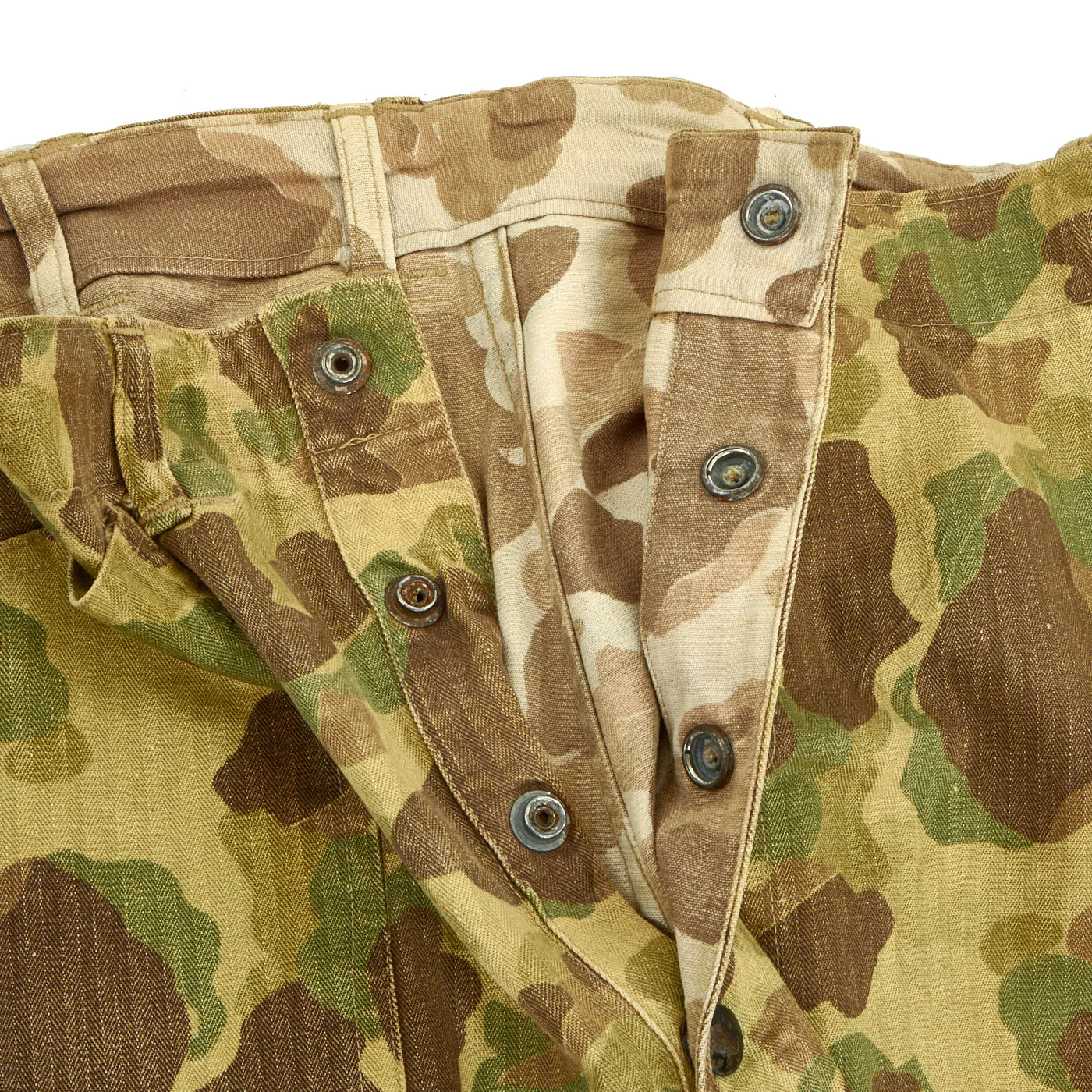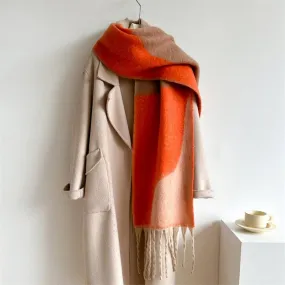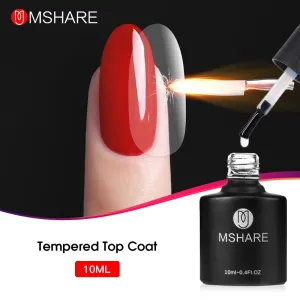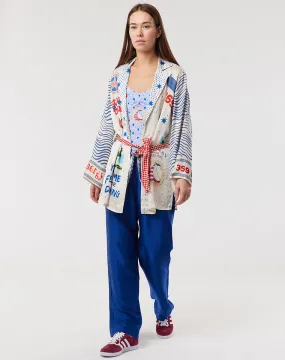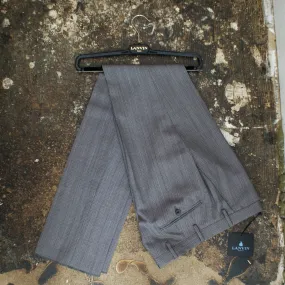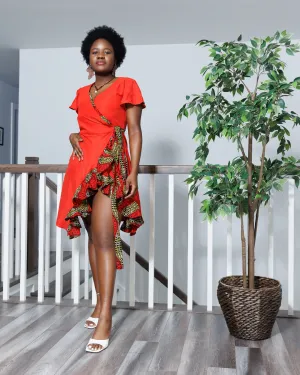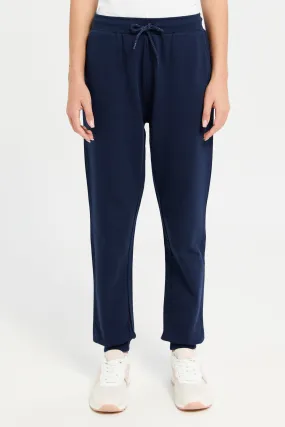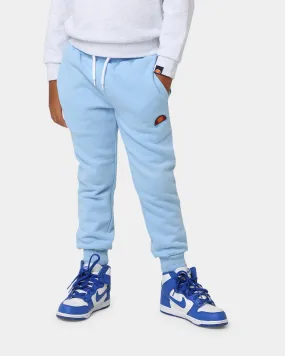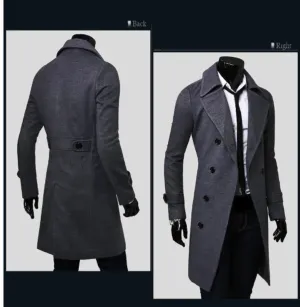Original Item: Only One Available. This is a lovely and rather rare pair of M1942 “P42” Frogskin camouflage trousers! Unlike the P44 utilities, the P42 has a set of press button fly snaps instead of the black “donut hole” Marine Corps buttons.
Measurements:
Pants Waist: 31"
Pants Inseam: 31"
The M1942 Frog Skin pattern was the United States military's first attempt at disruptive coloration camouflage. In 1942, the Marine Raiders were the first issued the Frog Skin uniform, which was reversible with a five-color jungle pattern on a green background on one side and a three-color beach pattern with a tan background on the other side. The Paramarines had their own pattern uniform in the same camouflage pattern in the Bougainville campaign.
The uniform was worn by the Marines in other campaigns, notably the Battle of Tarawa. In the ETO certain US Infantry divisions wore the uniform in France, but the uniform was withdrawn for resembling German camouflage uniforms.
This is a lovely worn pair with no major damage or stains, only minor fading. This is a seldom seen model and is scarce to find in any condition! Comes ready to pair with your P42 blouses!
Prior to World War I, the U.S. Army, Navy, and Marines had no camouflage uniforms. They were wearing the then-standard issue uniform in every military operation. These standard issue uniforms were a light brown color that resembles un-dyed wool.
By WW1, camouflage uniforms were far from standard, but some troops were outfitted with camouflage akin to modern-day ghillie suits. If the terrain was particularly rocky, the early camo suits would resemble the rock surfaces that soldiers would inevitably find themselves hiding behind or lying atop of rocks. For greener environments, the outfits would be covered in materials resembling the elements of the environment such as moss and leaves.
In World War II, the camouflage uniform truly started to emerge. Certain army units were assigned the HBT camouflage. This was short lived though due to the uniforms looking too much like the German Waffen-SS uniforms and friendly fire becoming a major problem.
In fact, by 1943, U.S. Marines in the Solomon Islands began wearing reversible beach/jungle coveralls with totally new green-and-brown "frog" patterns, later known as "frog suits". This type of camouflage pattern included speckled and disruptive coloration, similar to a frog's skin. The Marine Corps soon adopted a two-piece uniform made of the same camouflage material and used that same material for a helmet cover during the Korean War.

